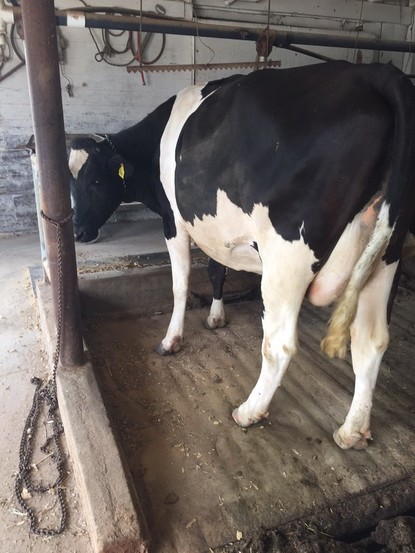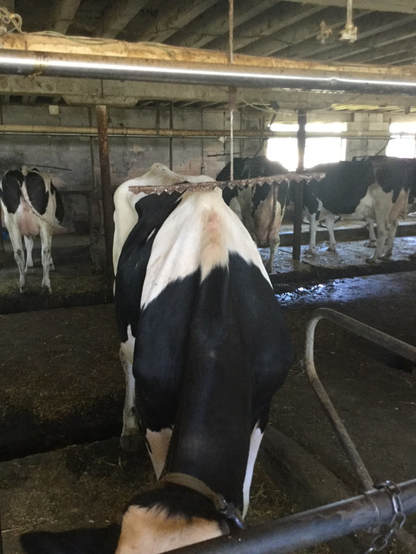When untethered, cattle will groom parts of the body that they cannot reach while tied, interact with other cows, and walk. Farms that provide outdoor access for tied animals have lower levels of lameness and hock injuries than those that do not; similar effects are seen in cattle who are provided daily exercise compared to those who are not.
Cattle find electric shock aversive. Electric trainers are associated with an increased prevalence of dirty cows, and their use is a risk factor for mastitis, hock injuries, and other injuries on tiestall farms.
Cattle find electric shock aversive. Electric trainers are associated with an increased prevalence of dirty cows, and their use is a risk factor for mastitis, hock injuries, and other injuries on tiestall farms.
How to assess:
Tiestall release
If tiestalls are used for any group of cattle, they should be released from stalls daily, weather permitting. Observation of this practice in action or evidence that the practice is performed (outdoor fenced area accessible to cows with evidence of manure or cow traffic) is required.
If tiestalls are used for any group of cattle, they should be released from stalls daily, weather permitting. Observation of this practice in action or evidence that the practice is performed (outdoor fenced area accessible to cows with evidence of manure or cow traffic) is required.
Tiestall trainers
Trainers must be maintained so that they rest at least 2" or 5 cm above the cows as they stand in a relaxed position. Trainers may not be used on cows close to calving or that have recently calved. Trainers must not touch cattle while standing in a normal position; this is evaluated in all age classes that use trainers as part of the "METAL" criteria.
Important considerations about moving freely are also covered in: ability to turn around, stocking density, time budget, and exercise
Trainers must be maintained so that they rest at least 2" or 5 cm above the cows as they stand in a relaxed position. Trainers may not be used on cows close to calving or that have recently calved. Trainers must not touch cattle while standing in a normal position; this is evaluated in all age classes that use trainers as part of the "METAL" criteria.
Important considerations about moving freely are also covered in: ability to turn around, stocking density, time budget, and exercise
There is currently no repeatability test for this measure.



